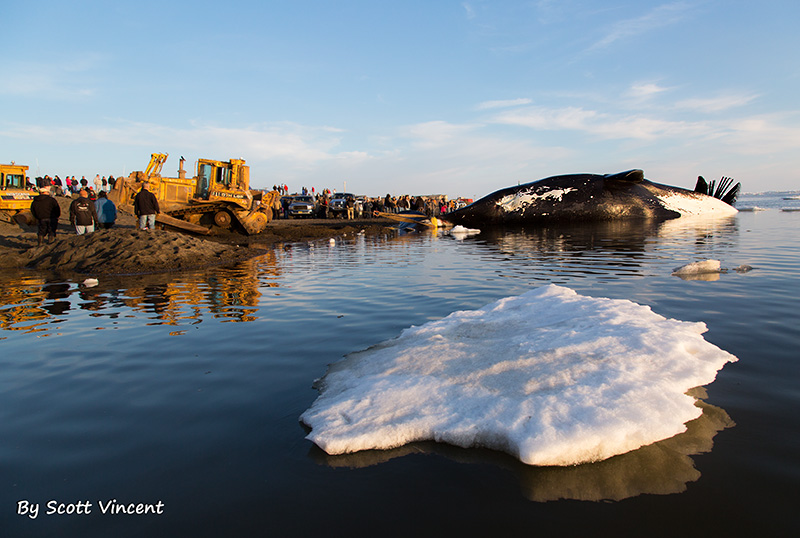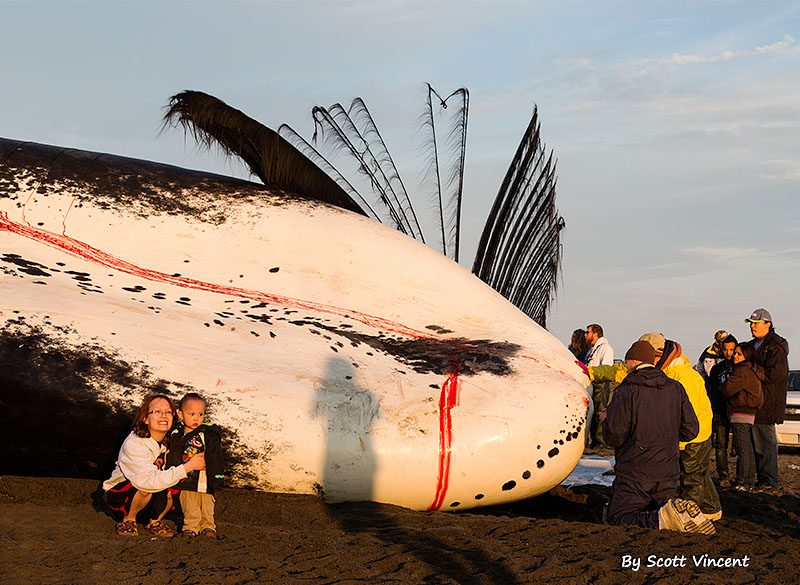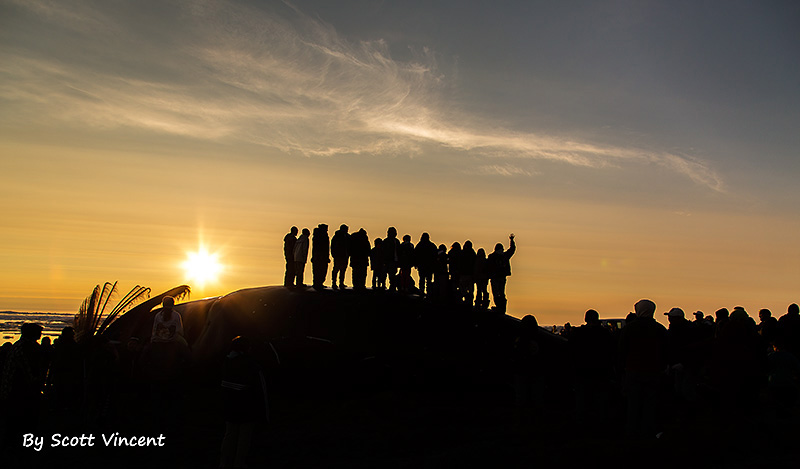Making Pictures – The Voice
By Scott Vincent
Note: “Making Pictures” is Scott Vincent’s continuing series about the technical of philosophical aspects of photography.
Much like you, I like to take photographs of things that I enjoy, that are interesting, or that are simply fun. Having memories of these things and sharing them with others is what helps to make photography enjoyable. But life isn’t always about love and roses – that’s simply the nature of living and life. Sometimes there are things that we see that we don’t understand or don’t like. Sometimes we run into controversy.
As a photographer, what do you do when you see something controversial? Do you photograph it?
I was in just such a situation this past summer in Barrow, Alaska. I was on an amazing bird photography workshop led by my good friend and fellow photographer Matthew Studebaker. On the way back towards the hotel around midnight after a very long day of photographing some amazing birds we ran into a crowd of people and cars on the road. This was very surprising because a crowd anywhere in Barrow is pretty tough to achieve since there simply aren’t that many people in the most northern U.S. city. Yet, there it was. Something important must be happening, but what was it?
It turns out that winter in Barrow this year was much longer than usual, and it extended way into the spring months. As a result the sea ice didn’t break up until mid-June, which normally begins to happen in April. This meant that boats could not leave the shore for fishing. It also meant that boats could not leave to hunt whales. Now they could, and just did.
 (Above Photo: Wading up to my chest in ice cold water, I used a wide angle lens to show the environment which includes the floating ice, the gathering crowd of people, the whale lying on its side, and the modern machines that will shortly drag the whale by its tail onto the beach.)
(Above Photo: Wading up to my chest in ice cold water, I used a wide angle lens to show the environment which includes the floating ice, the gathering crowd of people, the whale lying on its side, and the modern machines that will shortly drag the whale by its tail onto the beach.)
I’ve been fortunate to have been able to see many parts of the world and to experience different cultures. I get it that we’re all the same, but different. We all like some of the same things and can’t agree on others. I truly appreciate the differences. But some things I will never understand such as why in the 21st century humans still kill whales and dolphins. There is simply no need to kill these intelligent, beautiful species. In some ways it seems that we’re still as primitive today as we are advanced.
A little background might be helpful. The only piece of jewelry I own is a silver whale tail-fin pendant. I’m a fan of the TV show “Whale Wars” and follow closely the daily Facebook live feeds from the Sea Shepherd and the Cove Guardians in their quest to raise awareness and to stop whaling and dolphin hunting once and for all. I had always thought that it was other countries like Japan, Iceland and Norway that still barbarically slaughter these innocent creatures. Sadly, I was wrong. I was very wrong.
I couldn’t believe what I was seeing. Even more so, I couldn’t believe what I was hearing. There were crowds cheering. Car horns were blasting in triumph. Photographs of the conquest were being taken with little children posing by the whale. This was a huge celebratory event for Barrow. Yet, it was a horrific day for this mother-to-be with a nearly full term calf inside her, now also dead.
 (Above Photo: A photograph can portray the irony of a young child posing with its mother next to a recently hunted, pregnant whale)
(Above Photo: A photograph can portray the irony of a young child posing with its mother next to a recently hunted, pregnant whale)
As if in sympathy, the sun tried to set that day, but it too couldn’t sleep. It was 3am, and I had been photographing this event for three hours straight. I was exhausted but not tired. I was upset but not mad. I was standing next to someone who was overjoyed, and he was standing next to someone who was distraught. This was controversy, and I photographed it.
 (Above Photo: Normally we think of sunsets as beautiful and tranquil. Photographing the hunters standing on top of their freshly killed prize and including the sun to create a silhouette helps to elicit mystery, drama and emotion.)
(Above Photo: Normally we think of sunsets as beautiful and tranquil. Photographing the hunters standing on top of their freshly killed prize and including the sun to create a silhouette helps to elicit mystery, drama and emotion.)
I was the only photographer who stayed to photograph this event. The following day, knowing how much I admire cetaceans, someone asked me how I could photograph the butchering of the whale. My response? I had to do it out of respect for the whale. As disturbing as it was, I had to take the photographs to show others what is happening. If I didn’t know what was happening, certainly others won’t know as well.
The funny thing about respect is that I have no doubt that the people from Barrow also have great respect for the whales they kill. As little as 100 years ago, when there were no motor boats, no GPS, no SONAR, no exploding harpoons, and no airplanes to bring in daily supplies, whales sustained many native Alaskans over the hard winter months. I’m sure there is great respect for this inexpensive, yet unsustainable food source.
This was just one of 21 Bowhead whales that Barrow is permitted to kill this year. Plus there are other Alaskan communities that also hunt whales making the total take for Alaska around 60+ whales each year – And this is to hunt a whale that is classified as Endangered by the United States Endangered Species Act and classified as “Depleted” under the Marine Mammal Protection Act.
Times have changed though and so too should cultures adapt to these changes. It is morally indefensible to simply think that killing whales is still acceptable on the basis of it having been done for centuries before. There are large grocery stores filled with food in Barrow. I know because I shopped there and ate very well. Airplanes deliver supplies nearly every day to Barrow. These days people can live in Alaska without having to kill innocent, majestic, intelligent, docile, free living whales. It is simply no longer necessary. It is simply tradition that keeps the killing alive.
Transparency is the first step to change, and photography provides transparency.
Yes, photographing things we like is very enjoyable. I wish everything was enjoyable. Sometimes, though, photography can have a higher purpose. Photography can capture and highlight the injustices that are still inflicted on the voiceless souls of the sea. This whale, though, had a voice that day. These photographs are this whale’s voice.
You can help demonstrate the power of photography by sharing this article and these three photographs. Don’t let this whale’s voice go quiet. Be the voice of the voiceless.
